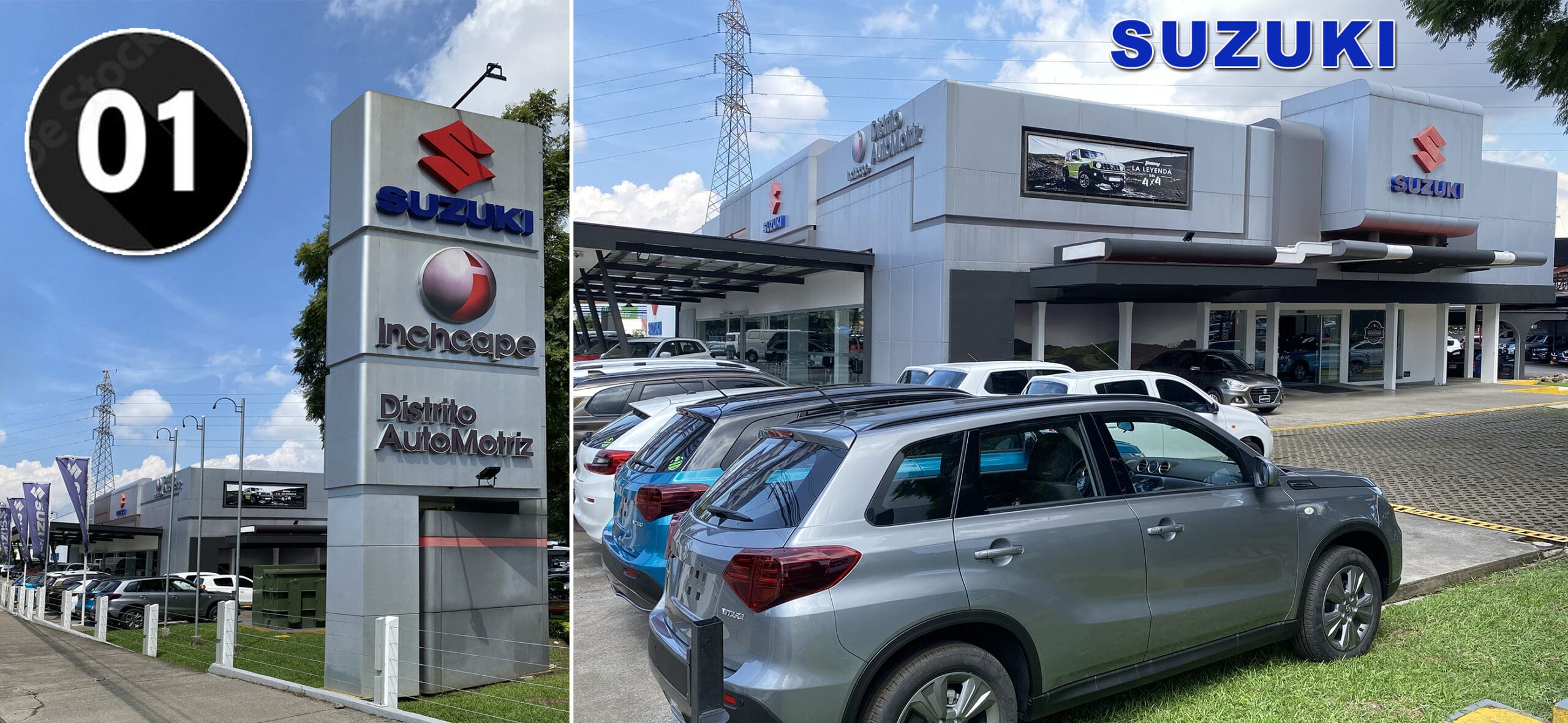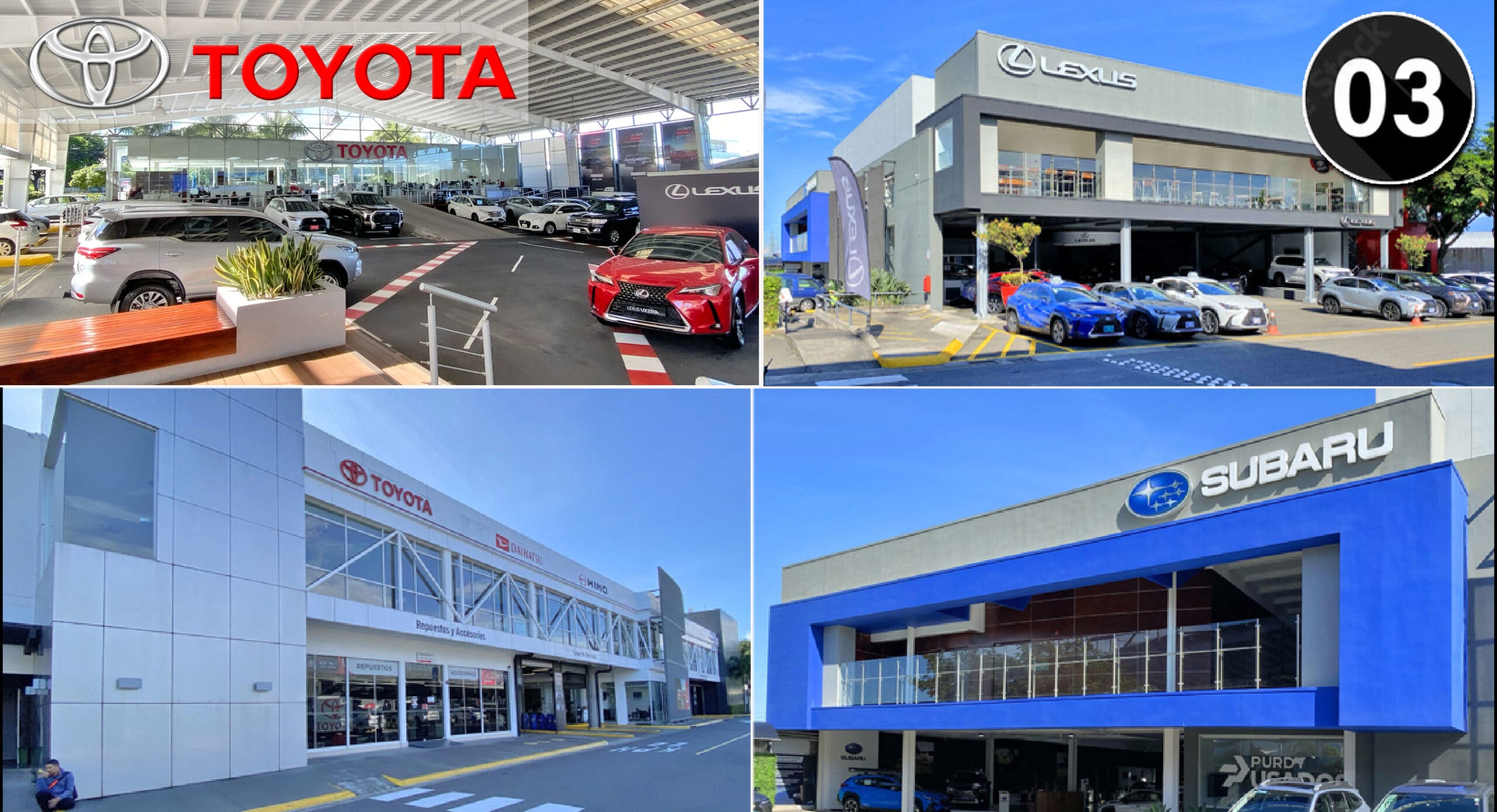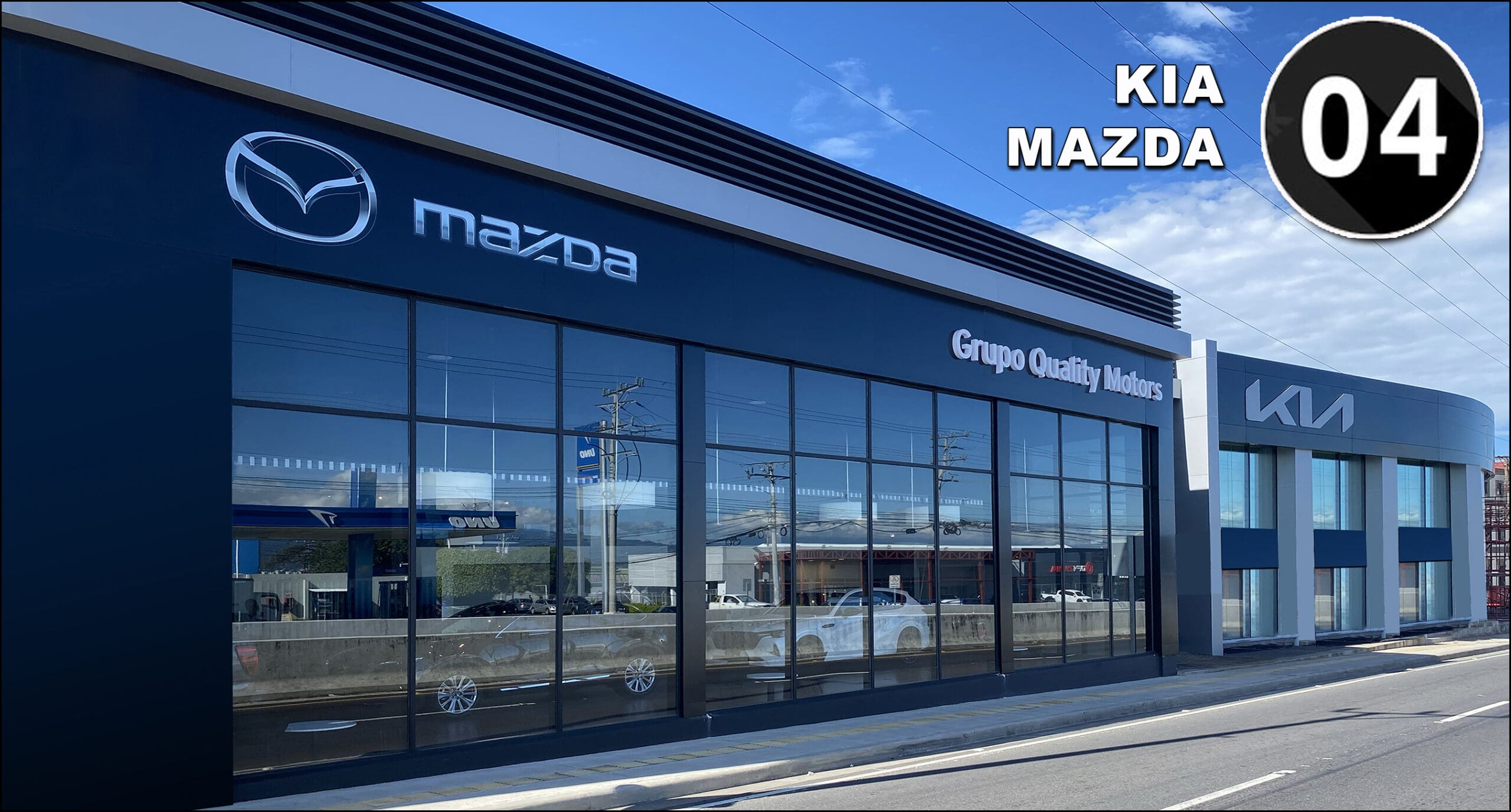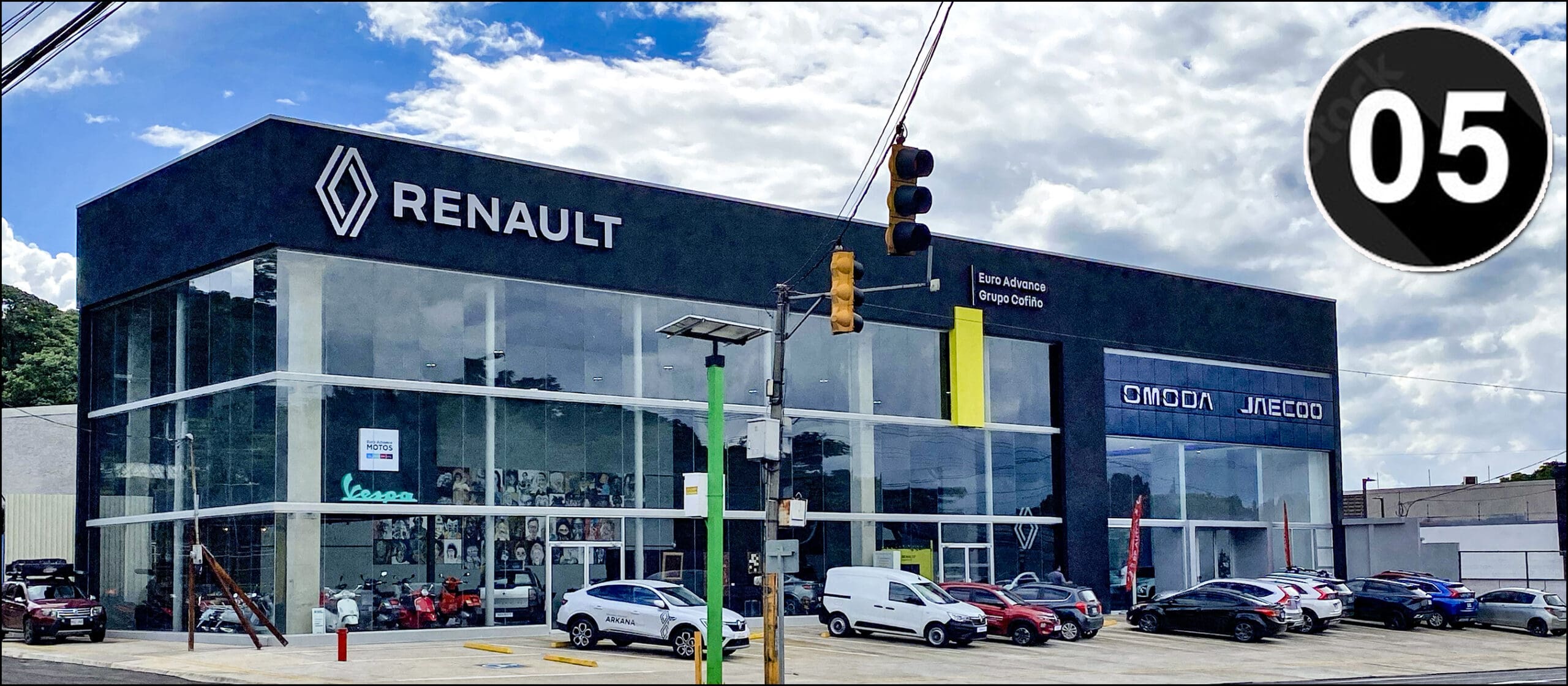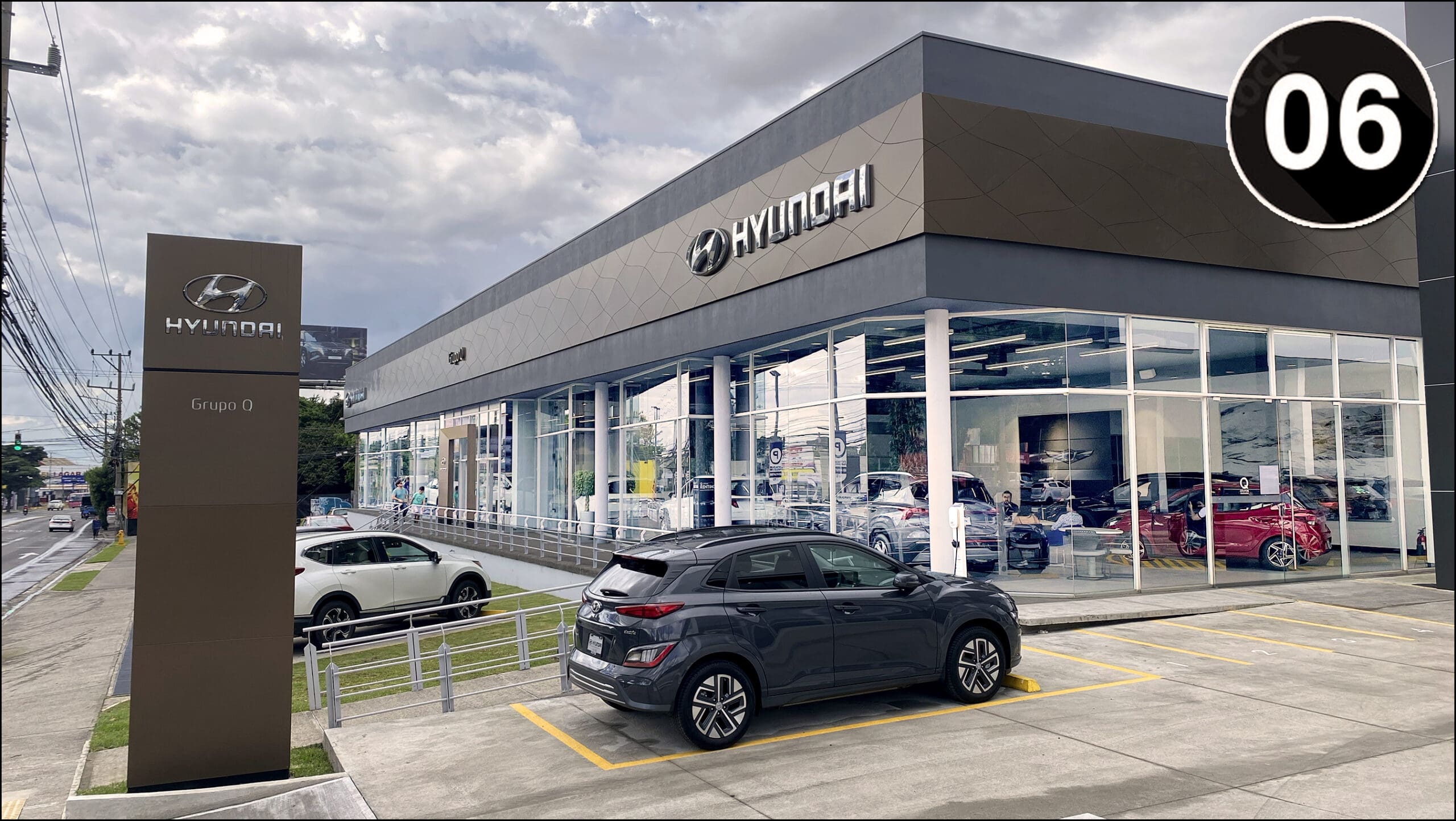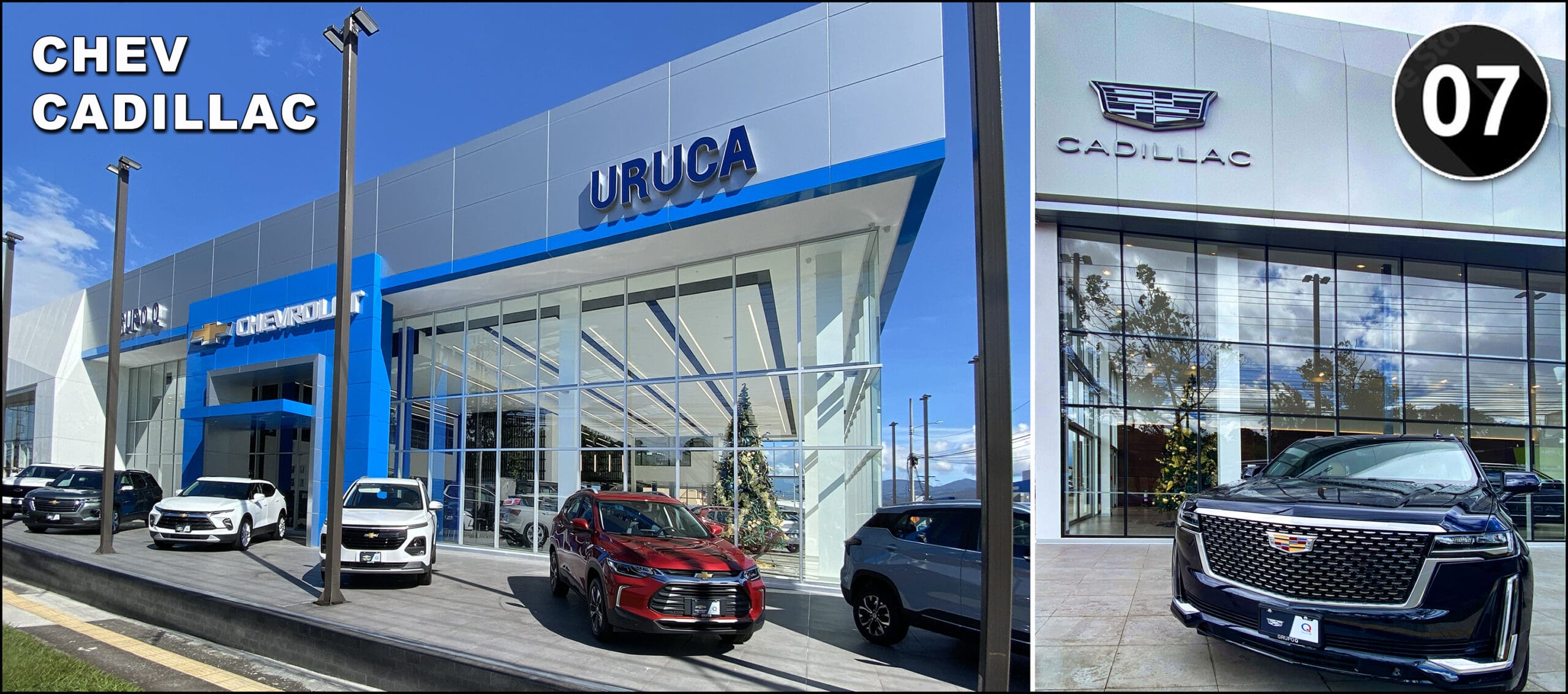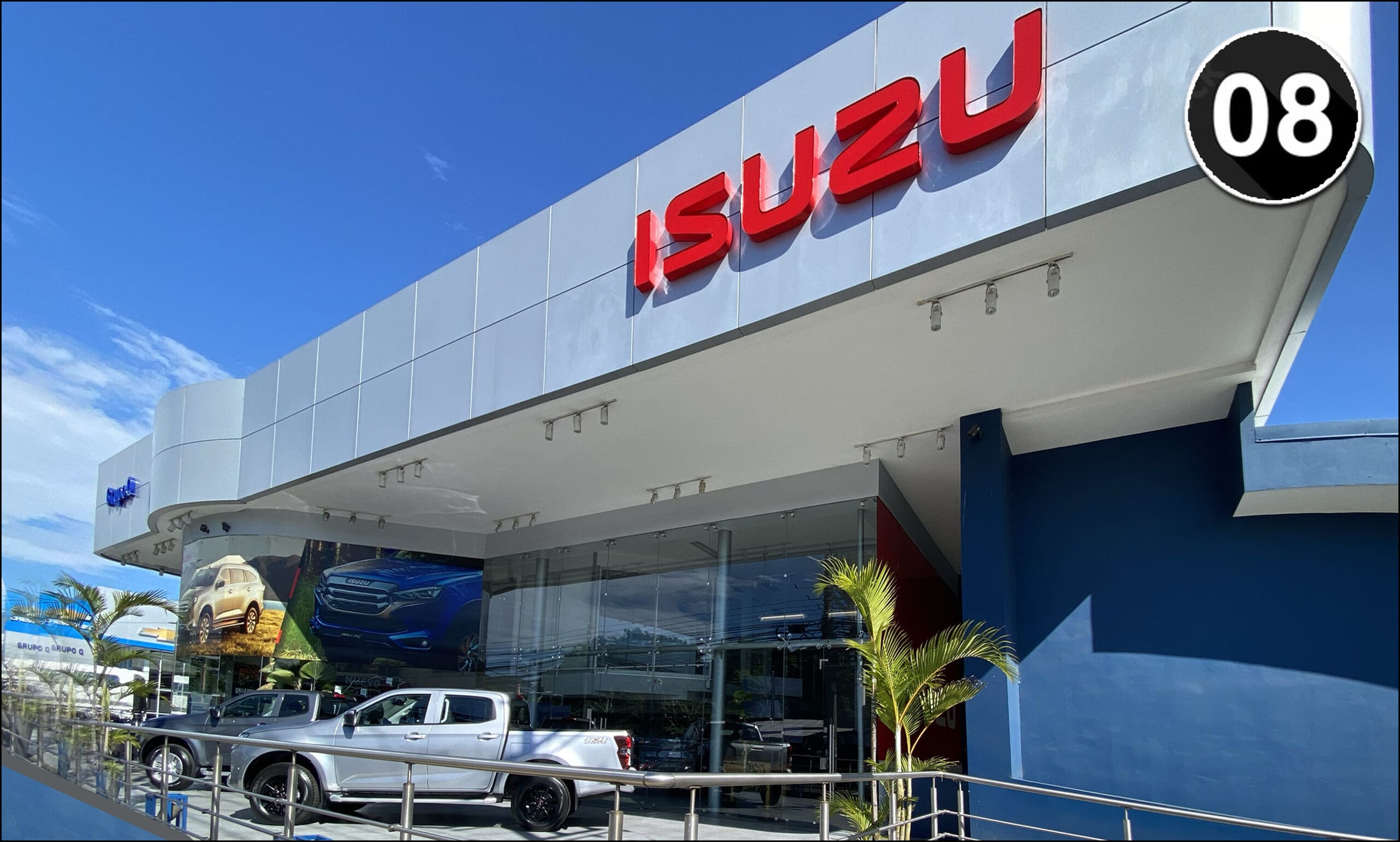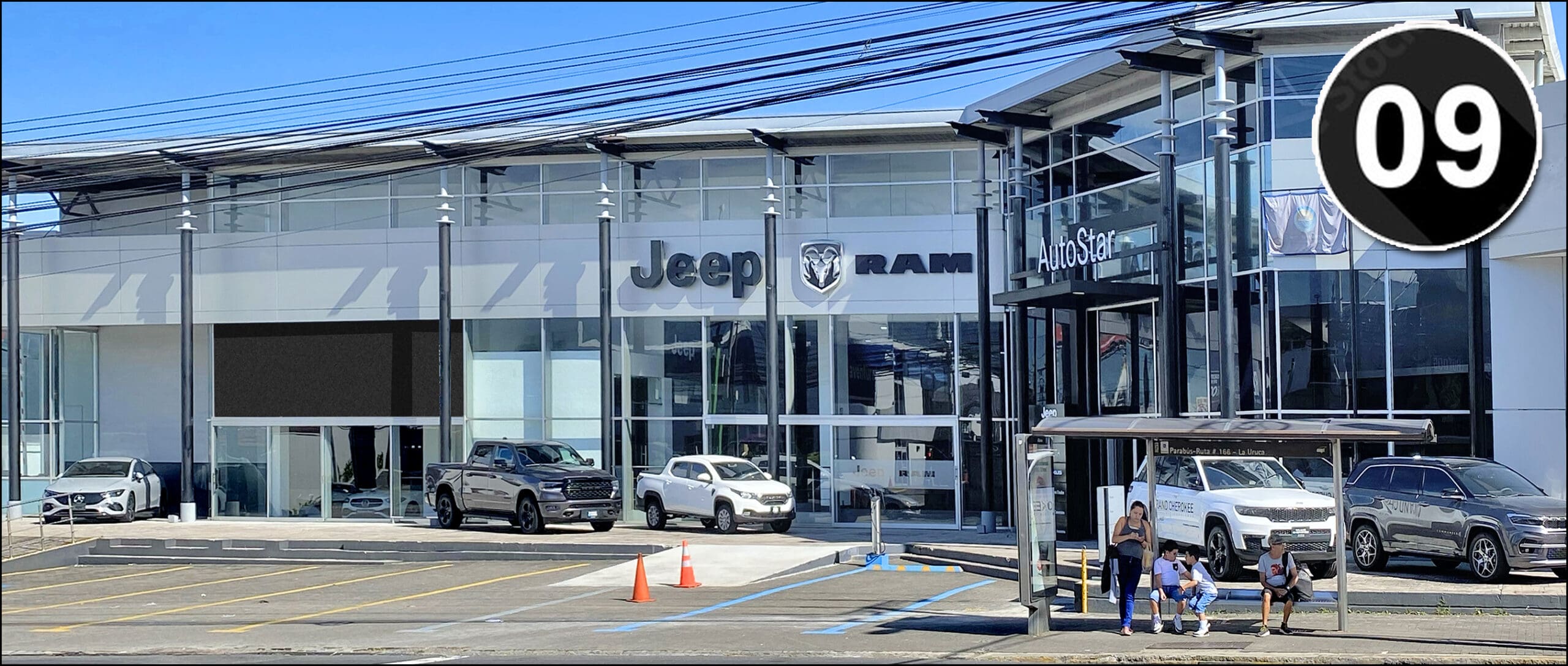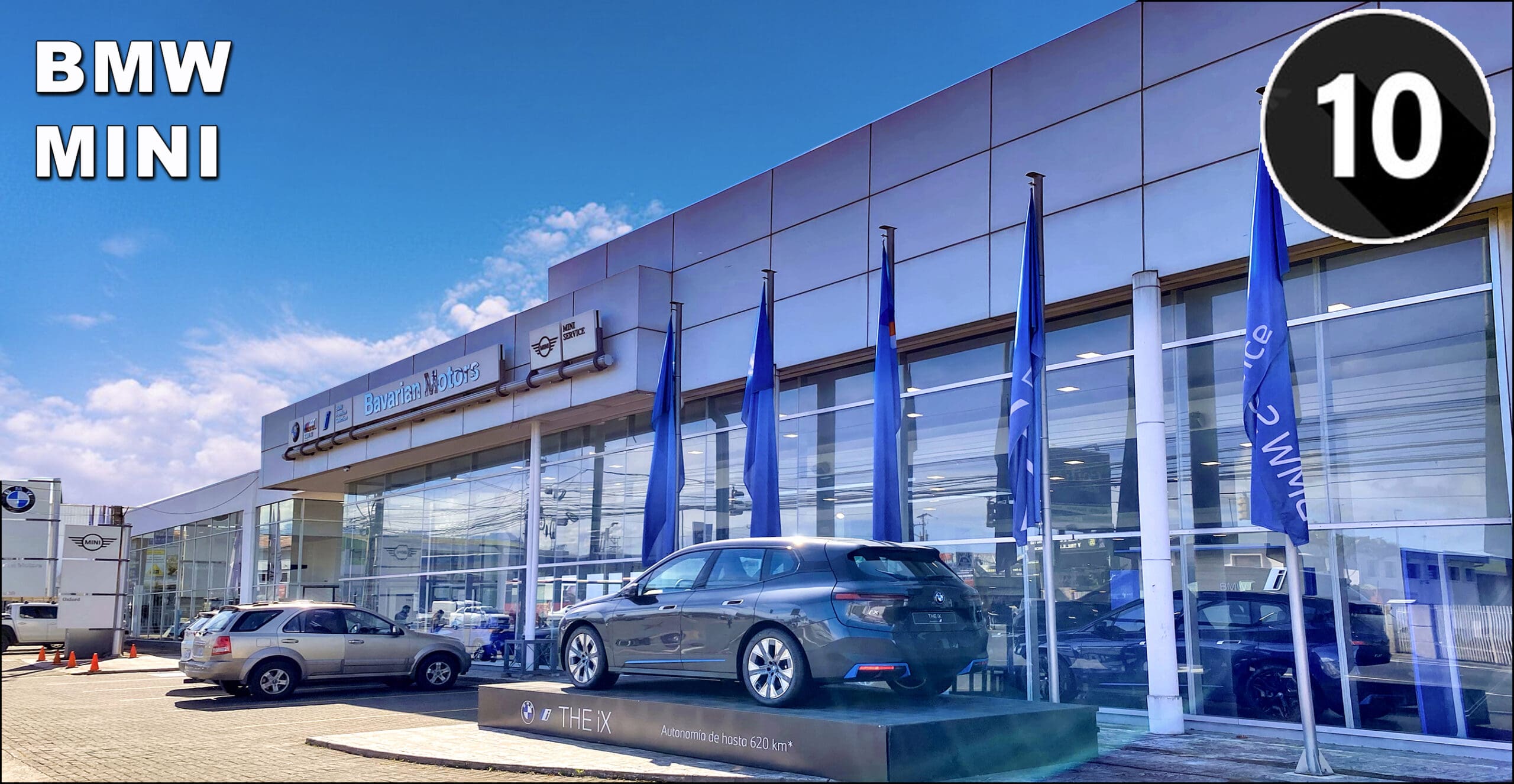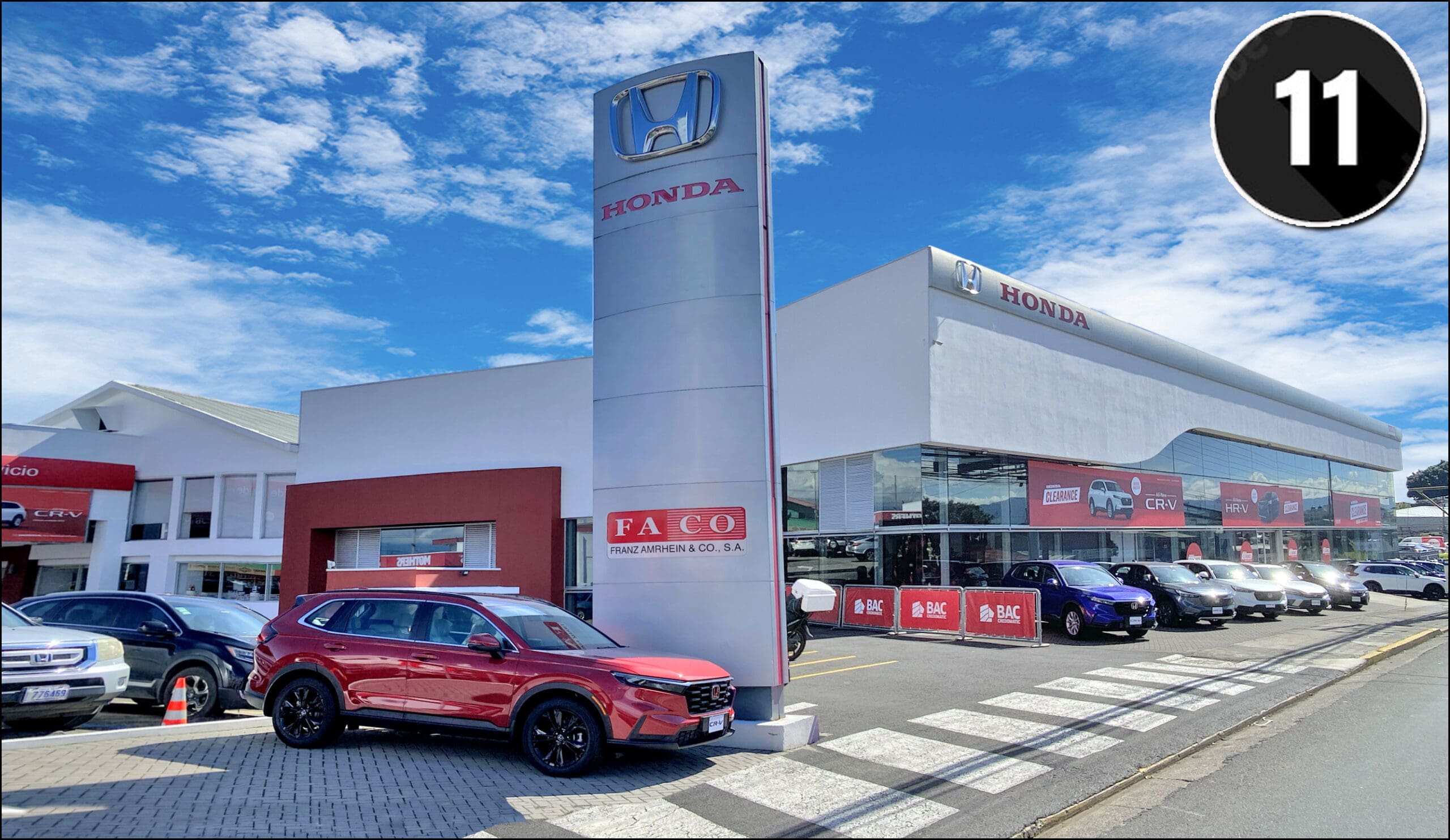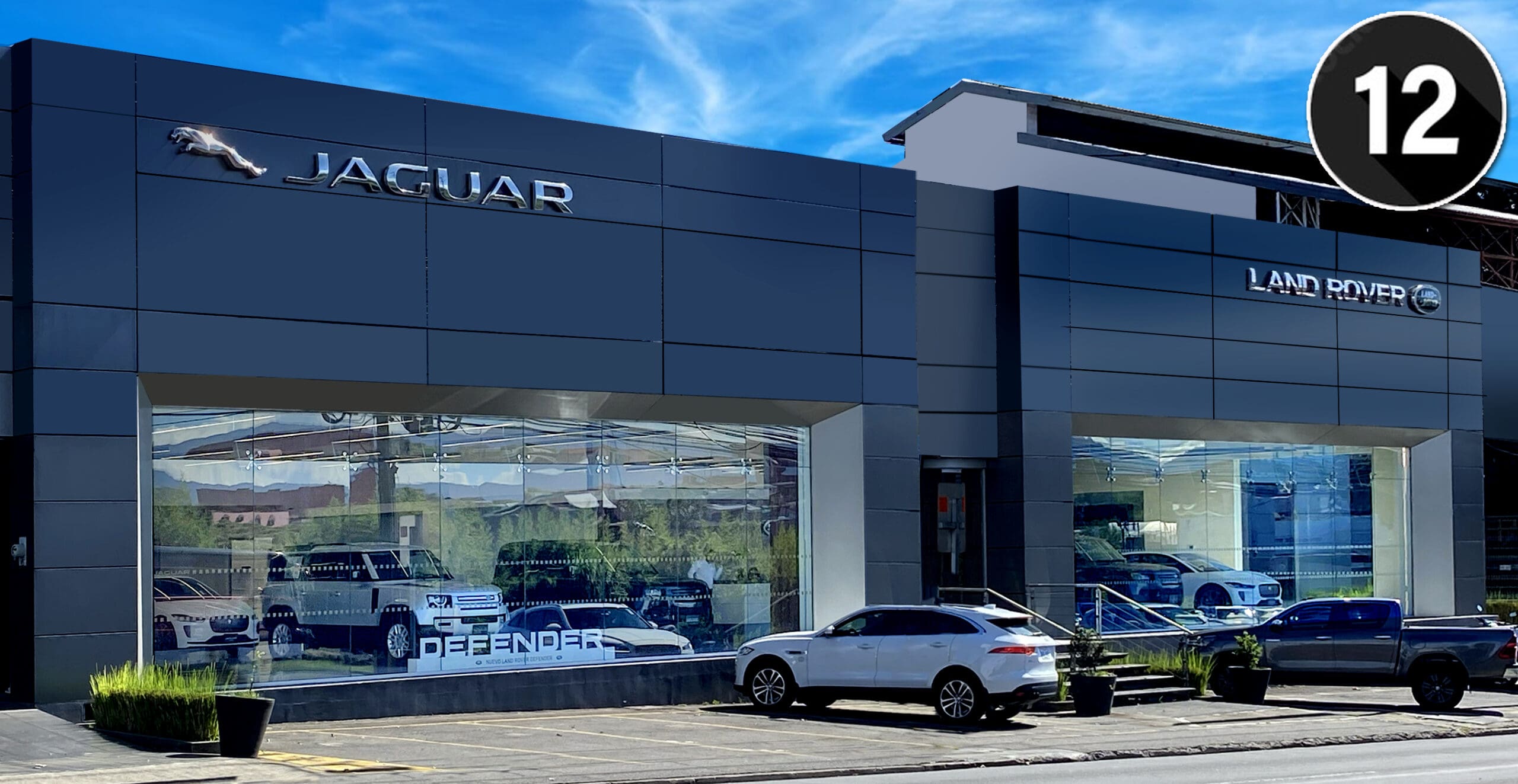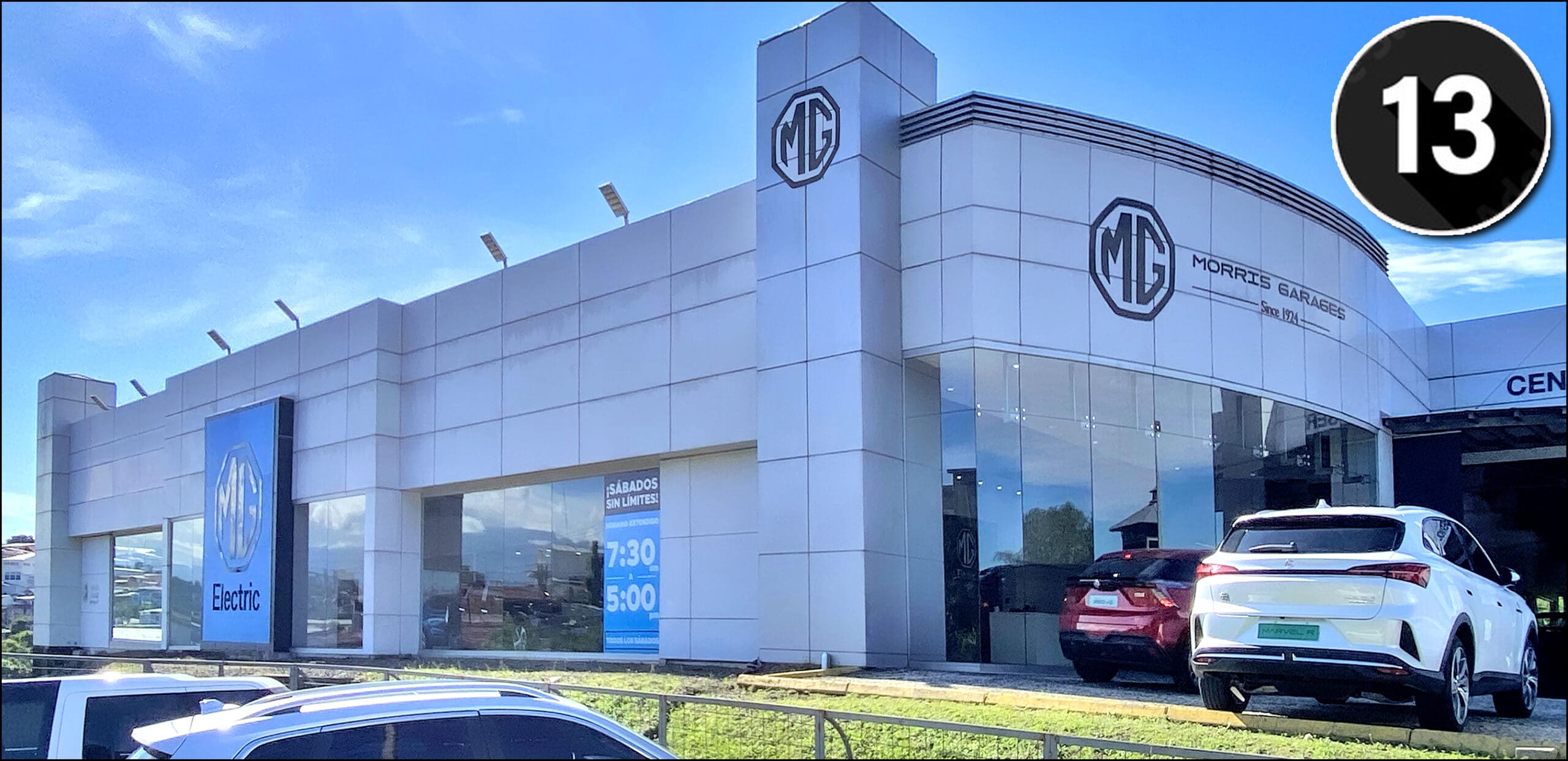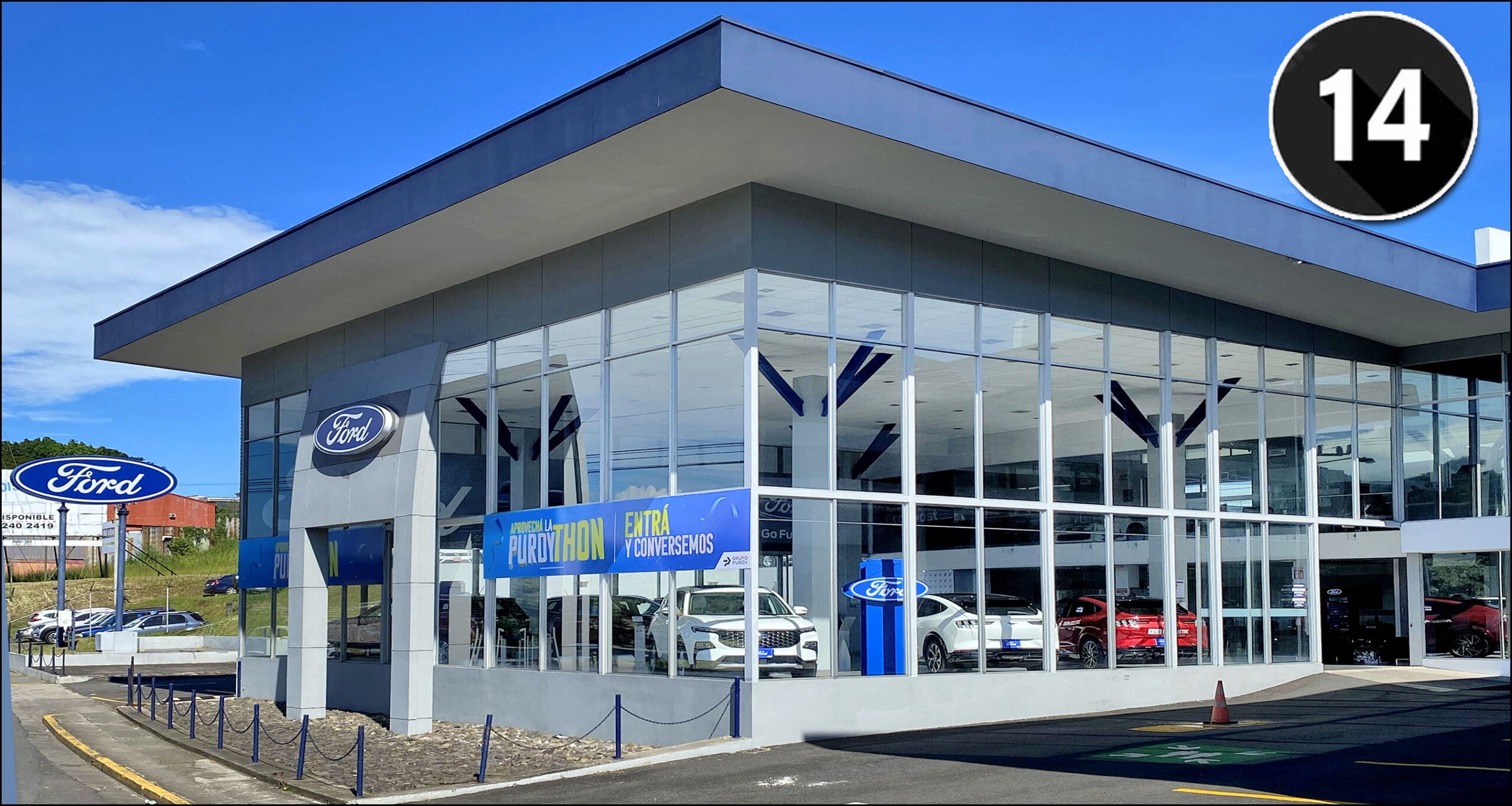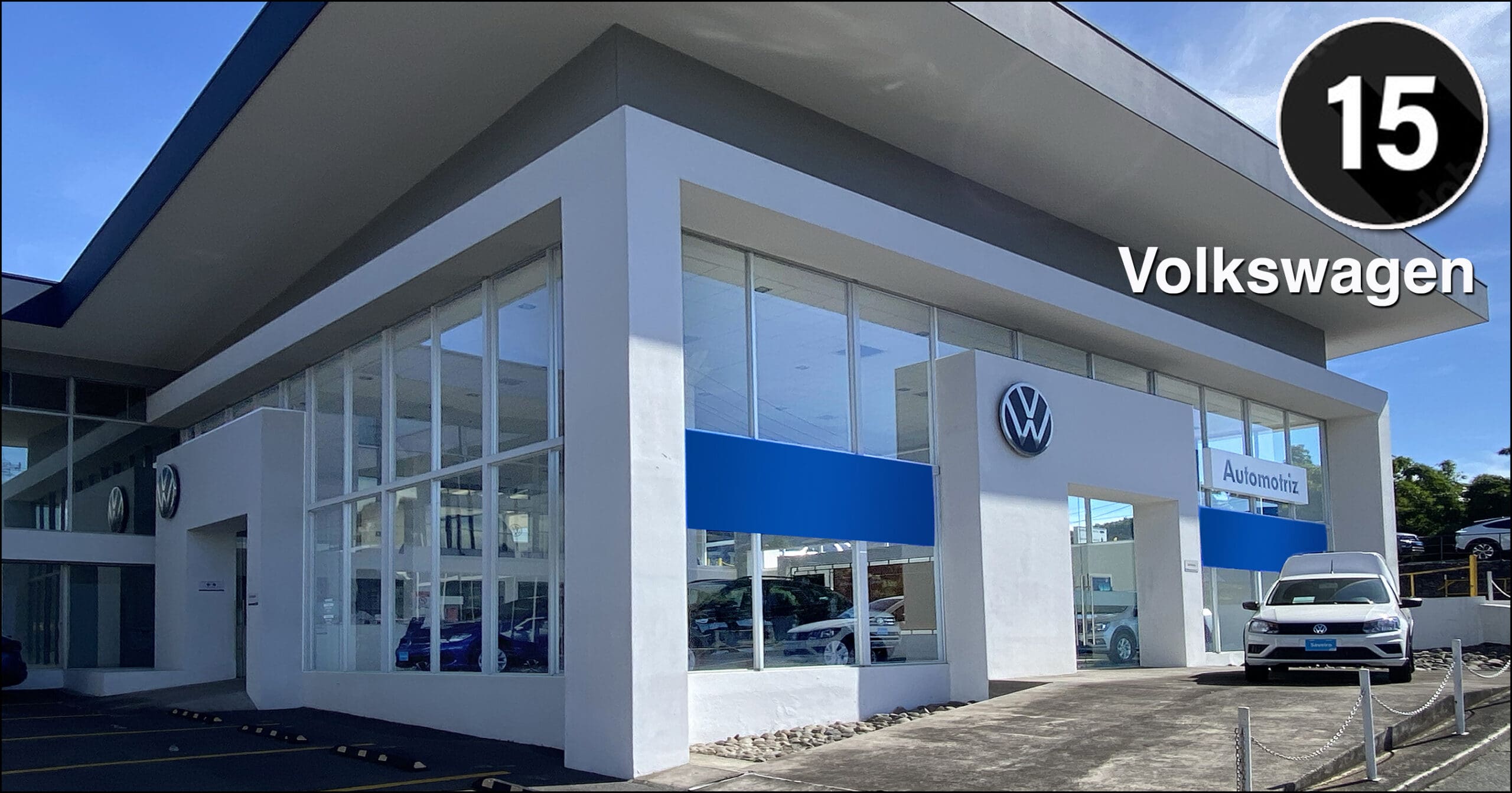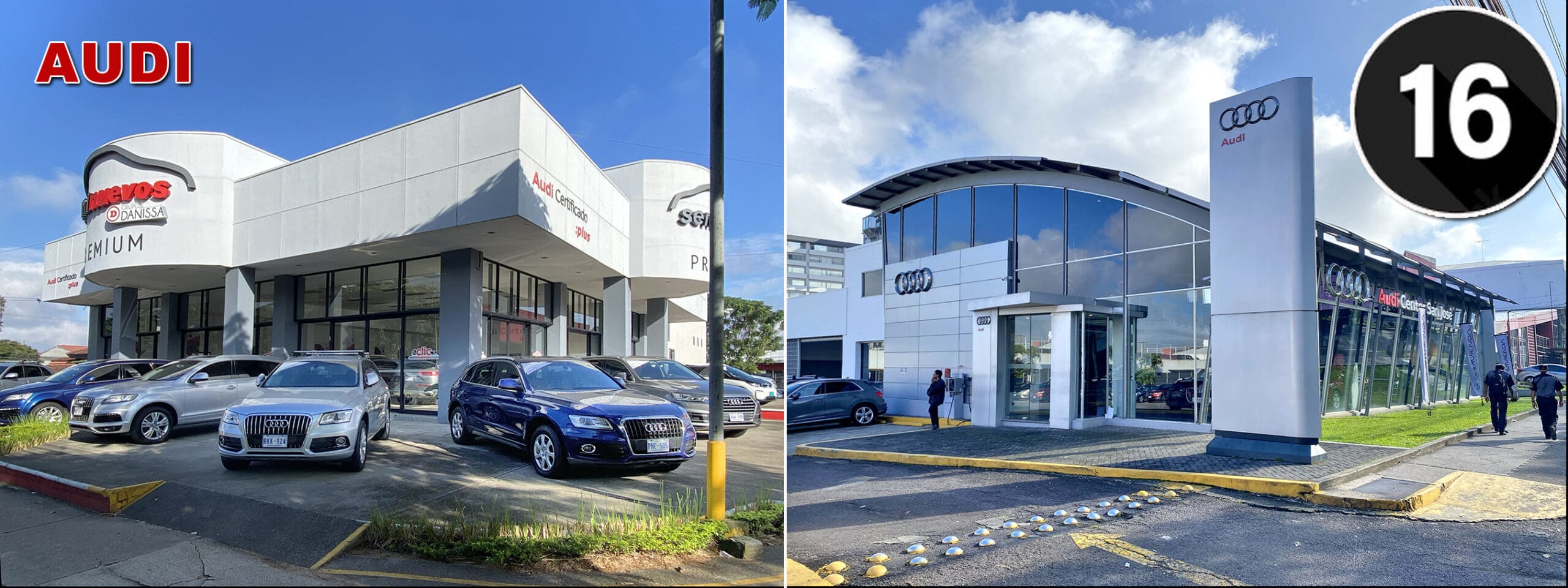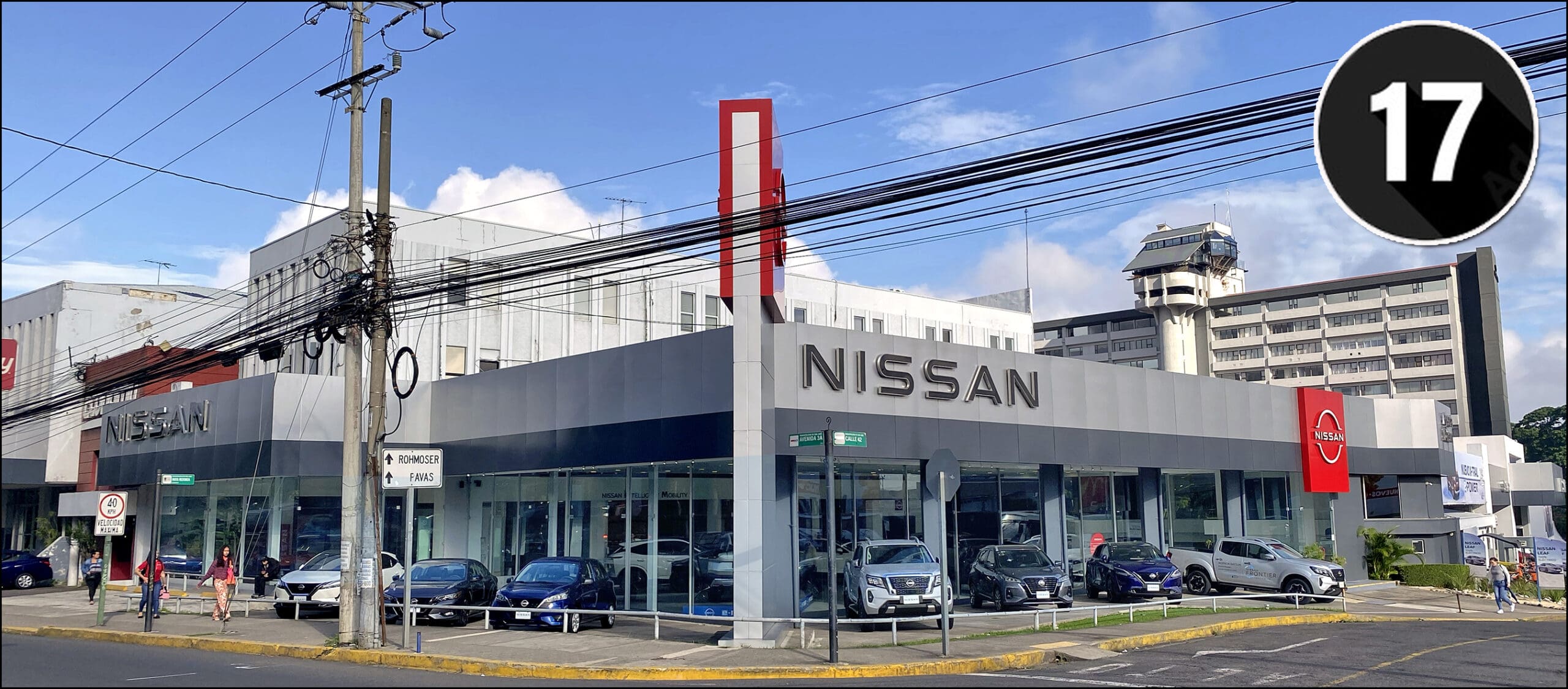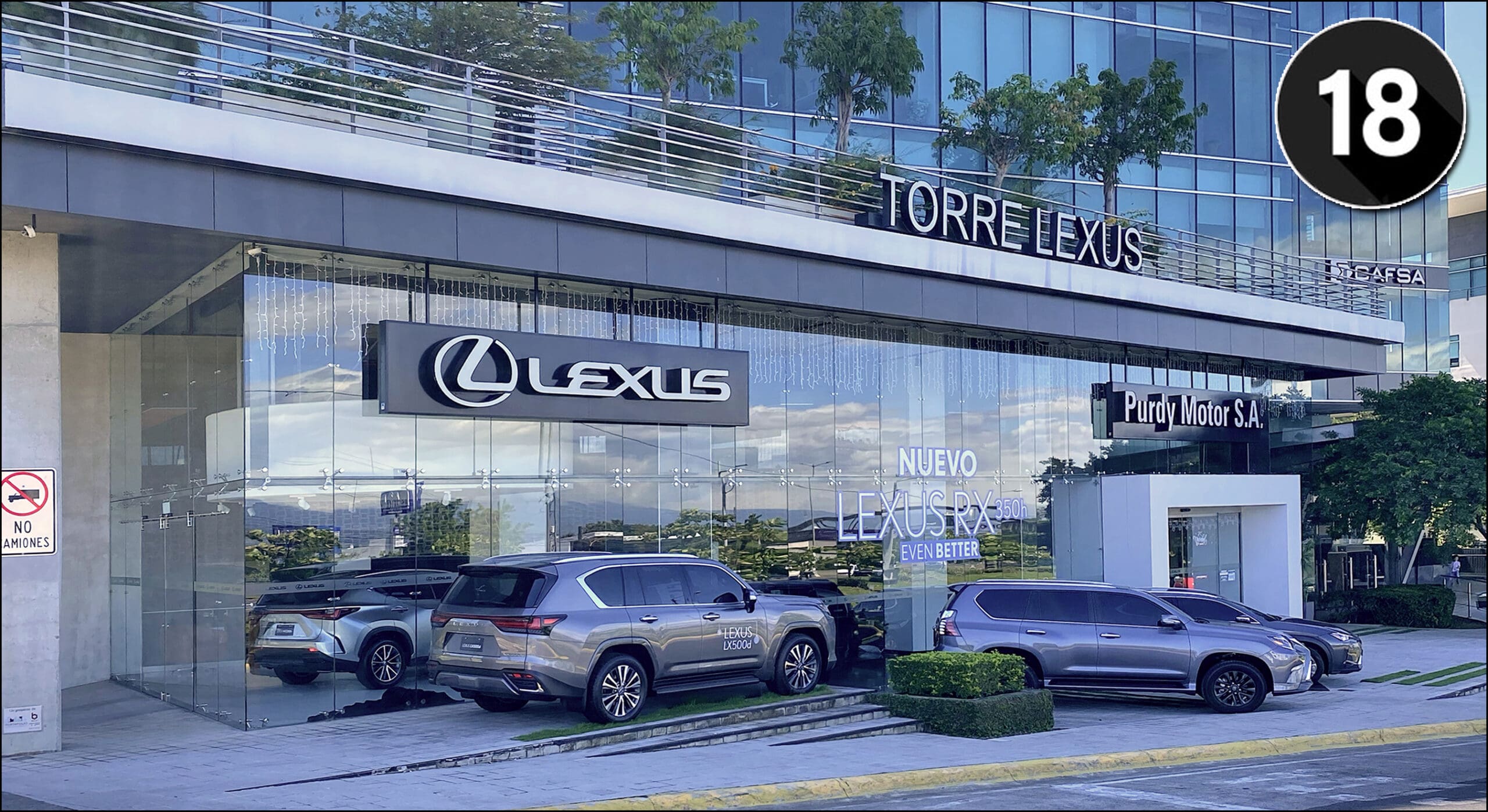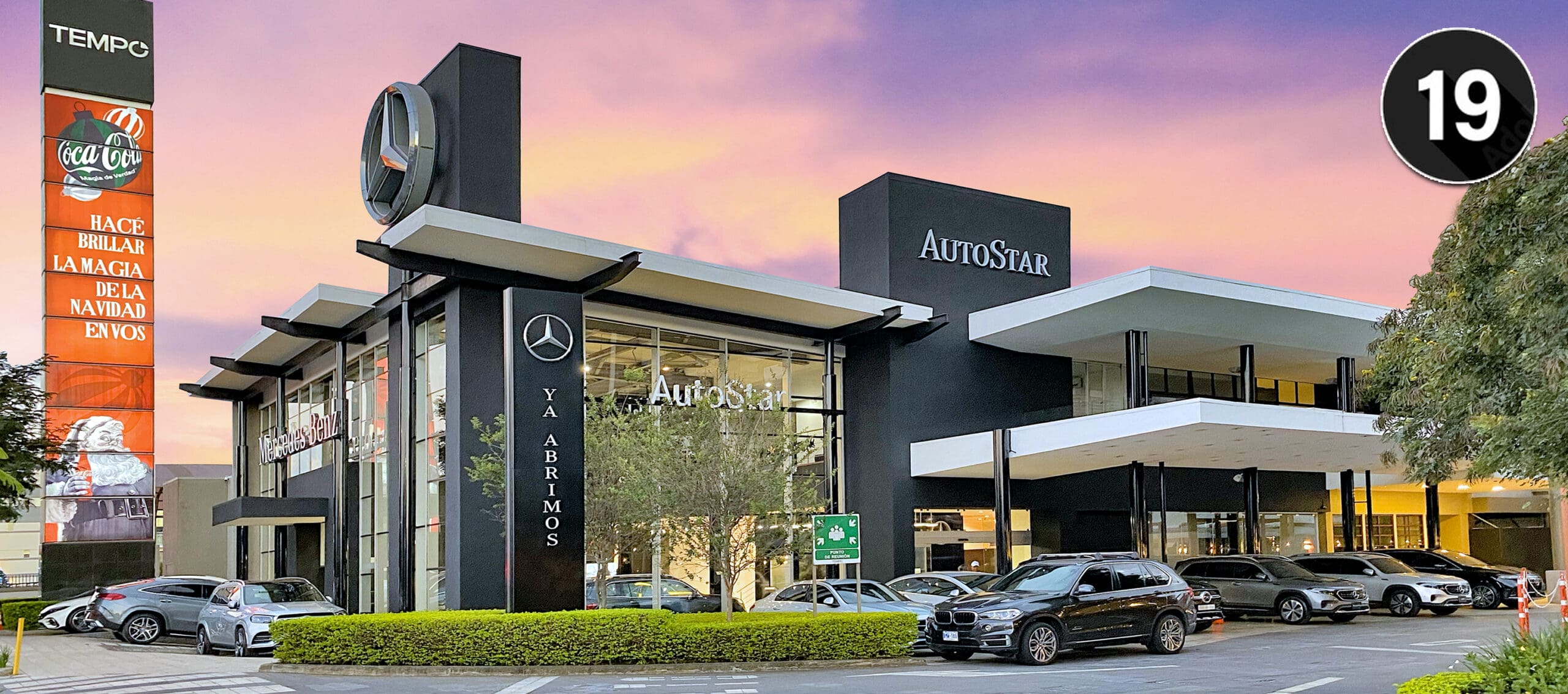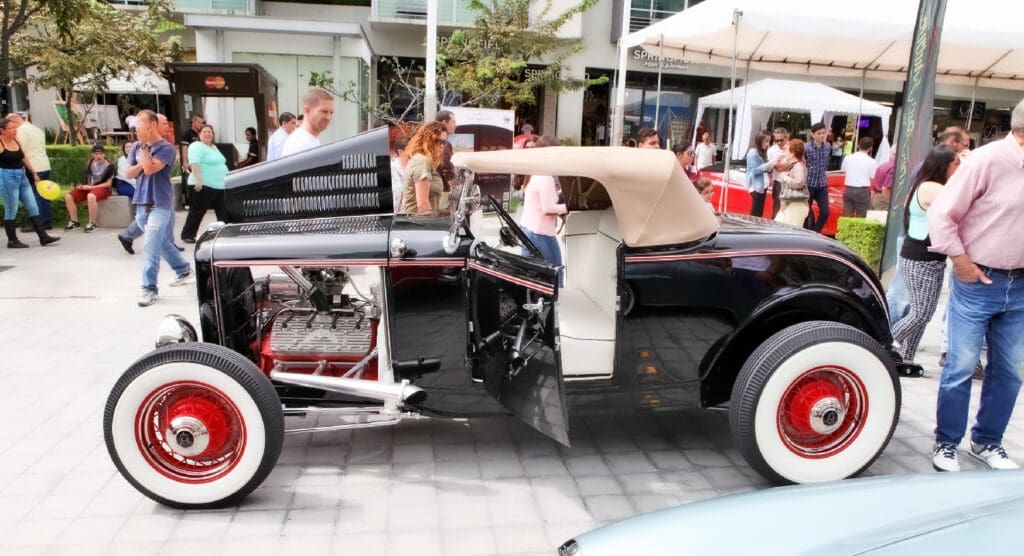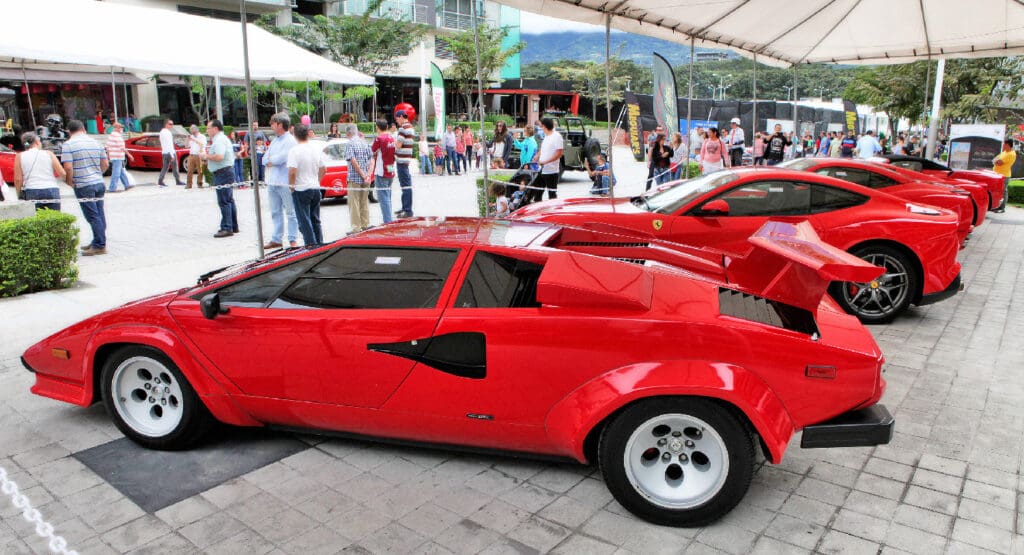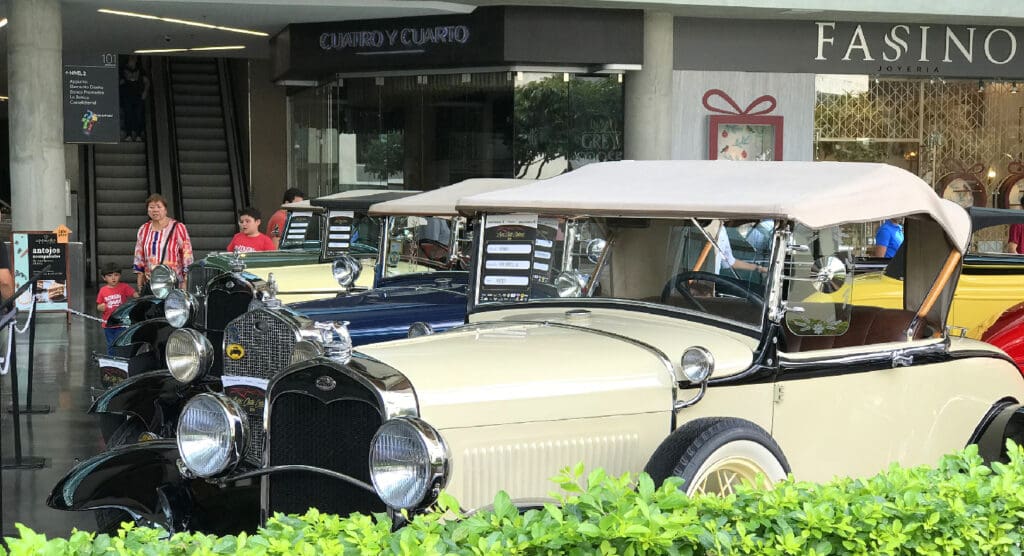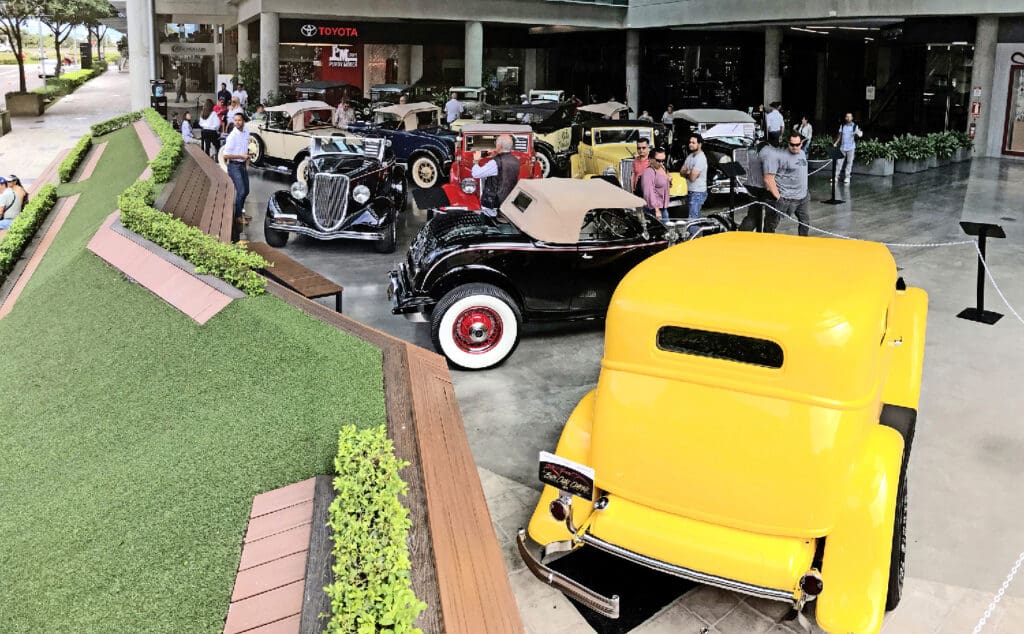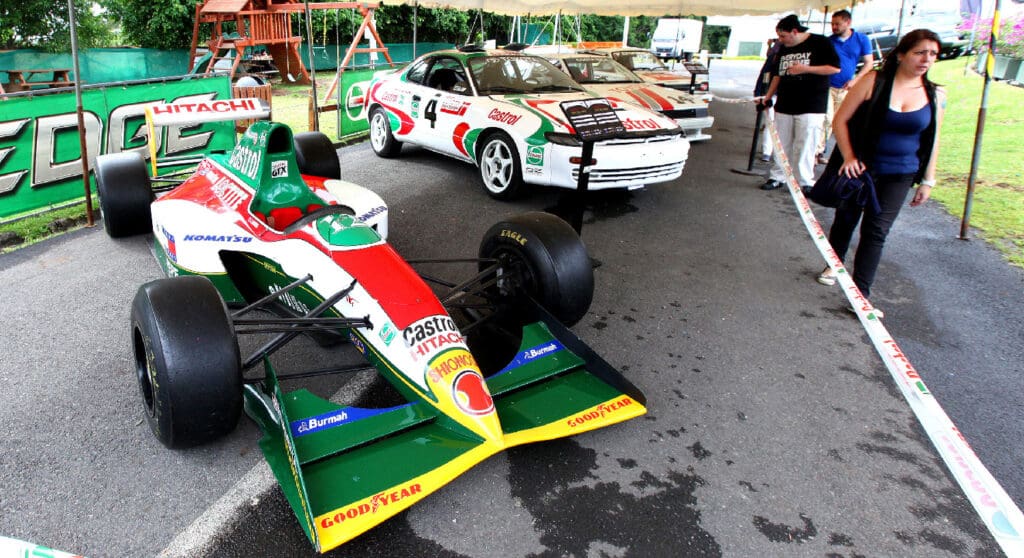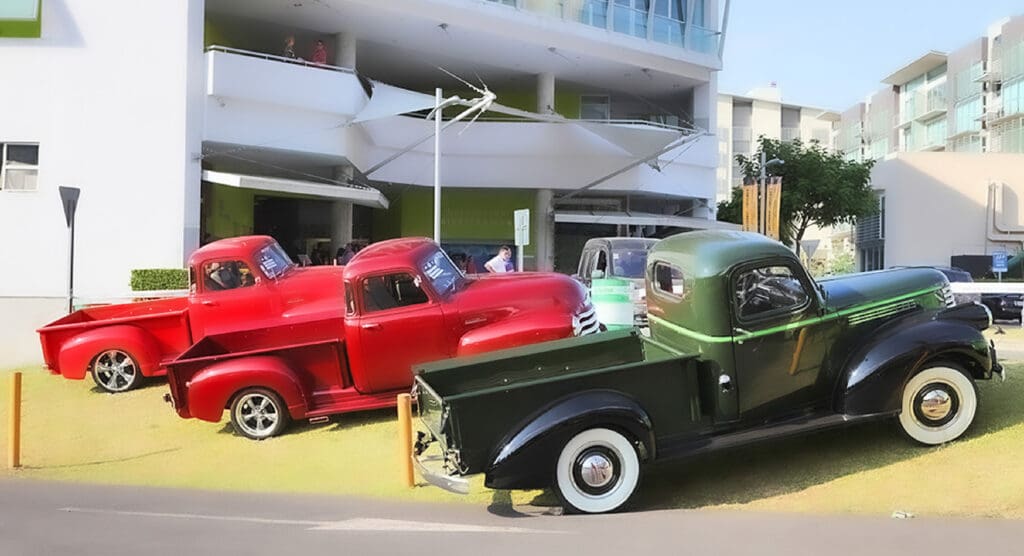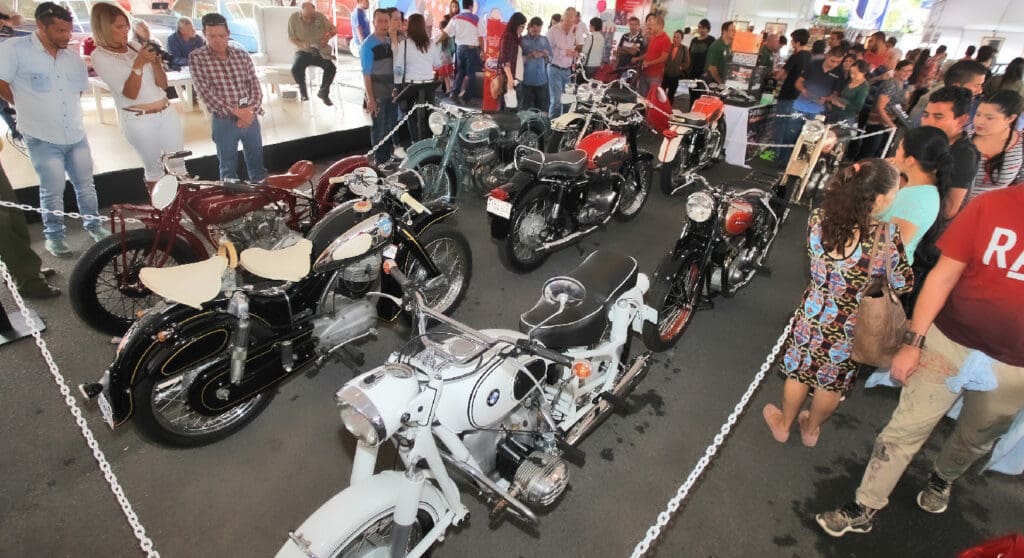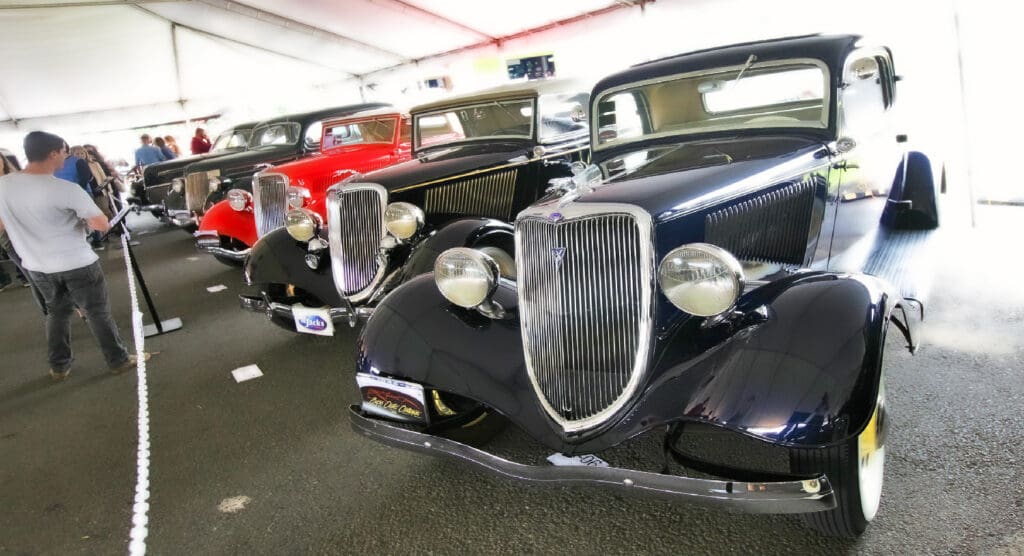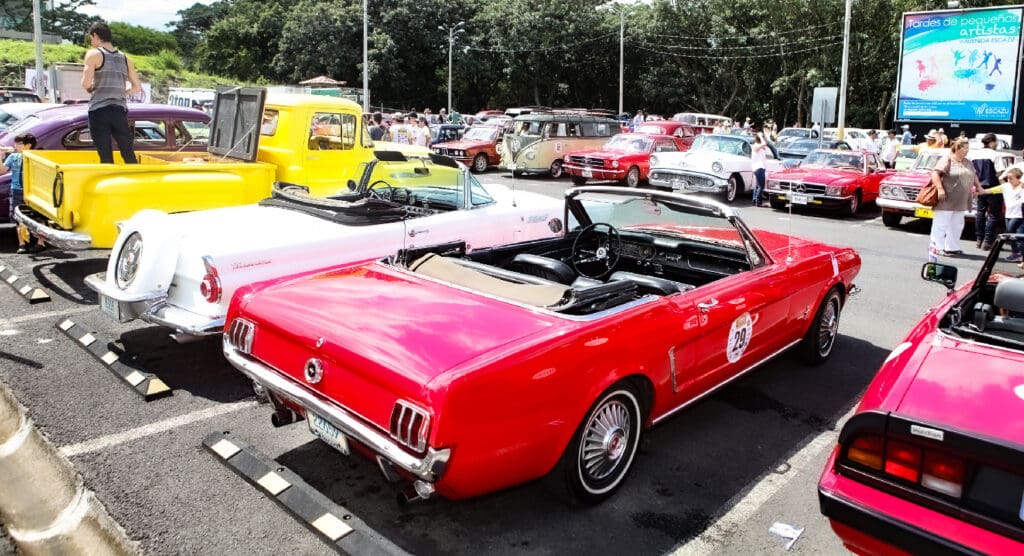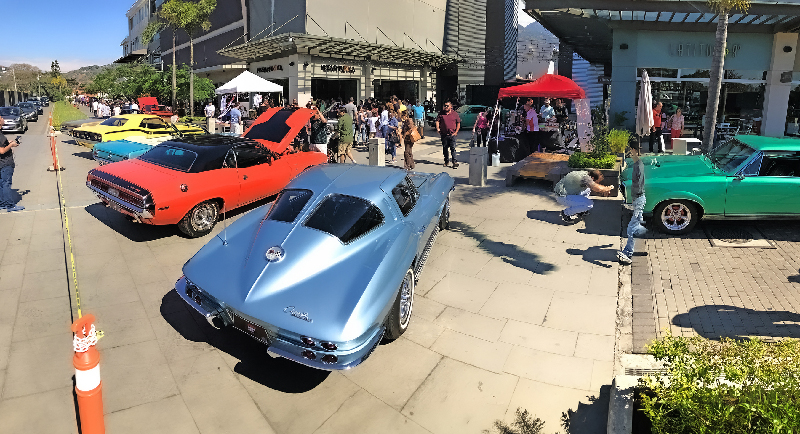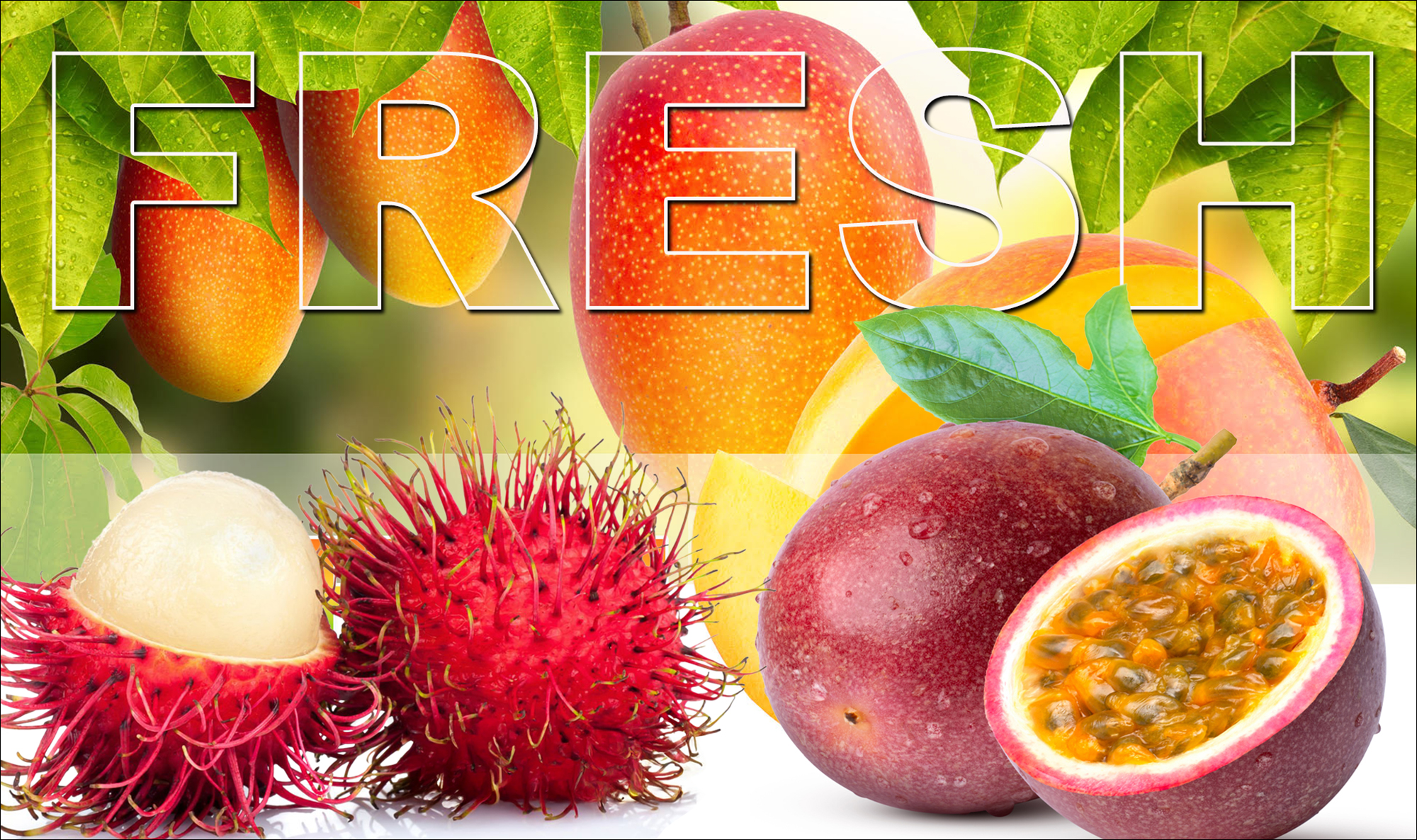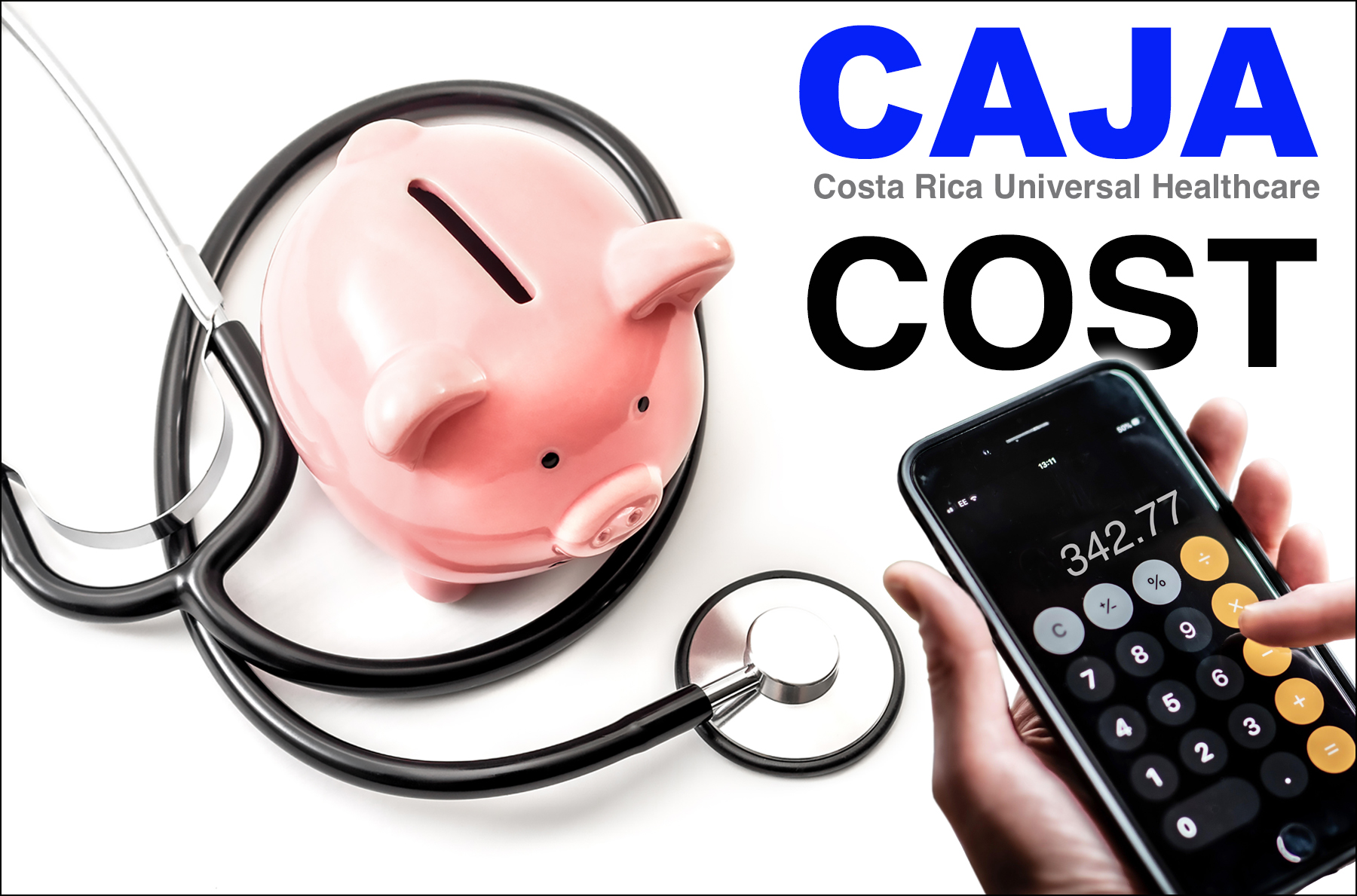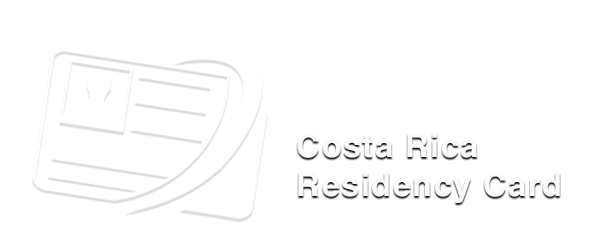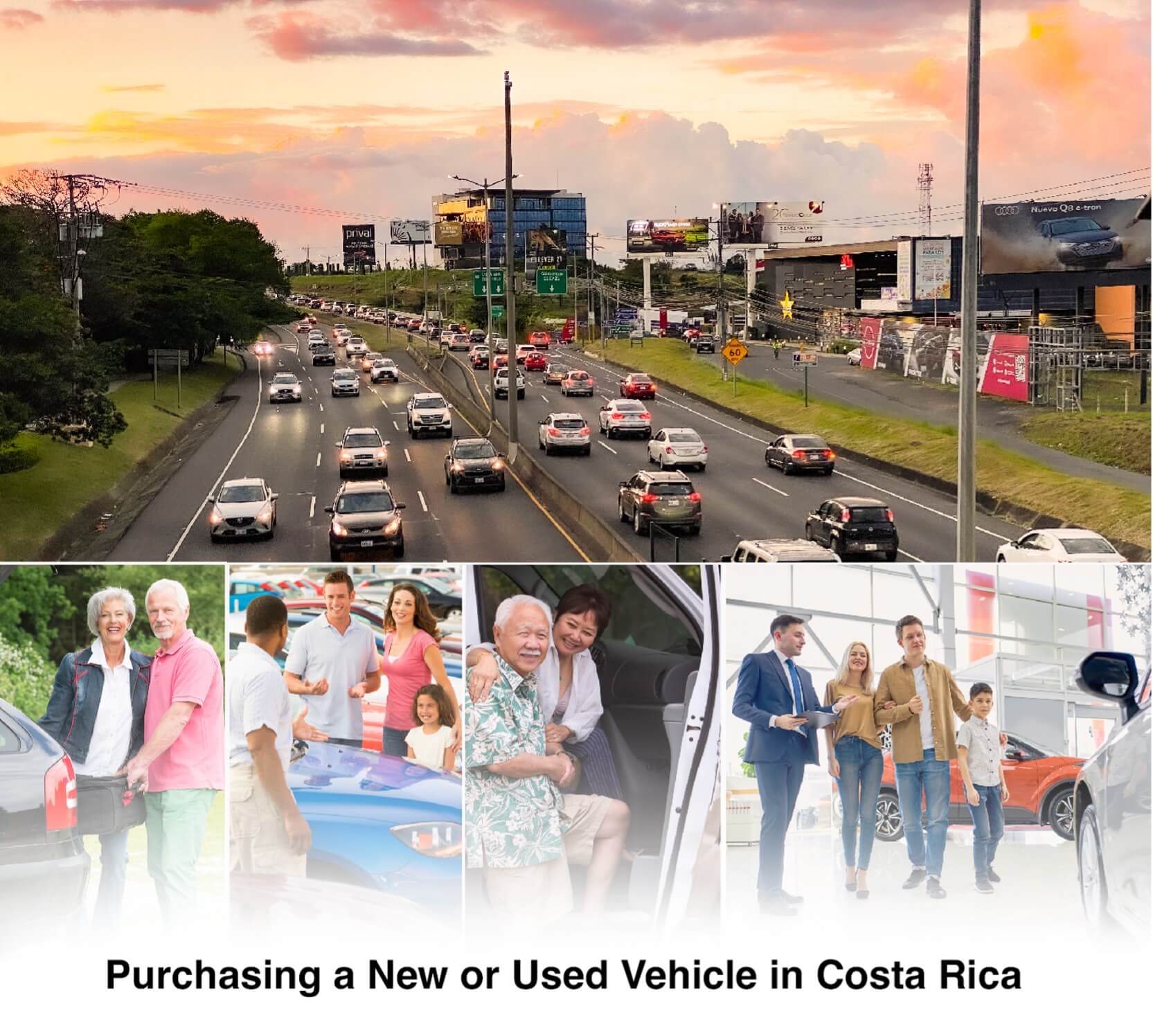
- New or used vehicle purchasing.
- New or used vehicle maintenance.
- The classic car scene in Costa Rica.
What follows is based on my experience, plus the real-world expertise of immediate family and close friends in the automotive service business here in Costa Rica.
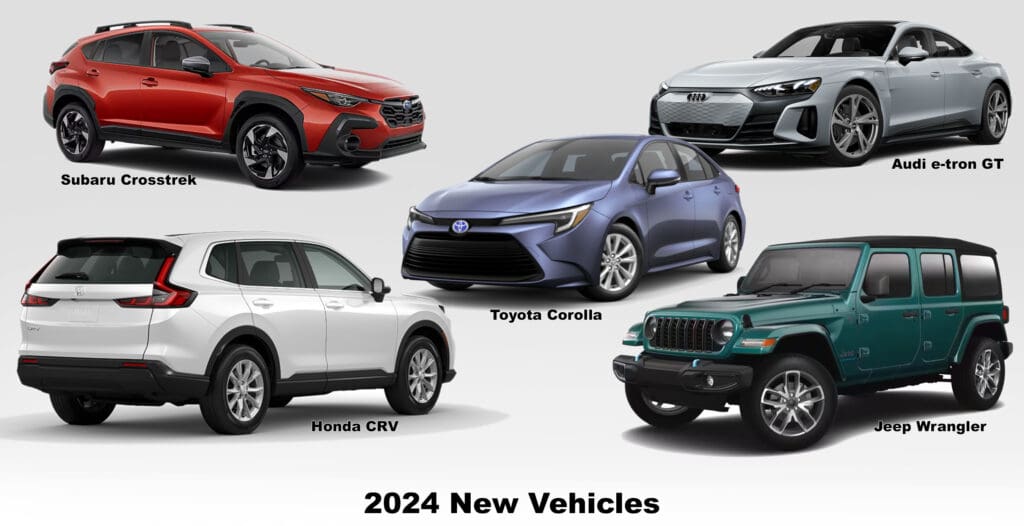
Begin by carefully re-considering your brand bias. Many of those were developed with biased logic. Whatever brand you plan to purchase, look up its reliability ratings before making a final decision. Things change from year to year. Read multiple reviews. Some are more objective than others.
Though not necessarily justified, most Ticos view American brands as inferior to Asian or EU brands. But Ford, GM, and Chrysler are all well represented here, mostly with pick-ups and SUVs. Due to the public perception, they do not retain value nearly as well as Asian brands. The top-rated mid-range brands here are Toyota, Honda, and Subaru, which is consistent with global consumer ratings. Due to the comparatively lower upfront purchase price, Hyundai/Kia are the most popular selling brands here. Nissan, Suzuki, Mazda, and Mitsubishi are also well-represented. But your best bet is Toyota, marketed exclusively here by Purdy Motors with a mammoth country-wide set of locations and support. Purdy also has the Lexus and Subaru franchises. That is followed by Honda (my personal preference), which is sold exclusively by FACO Honda with a leading dealership in San Jose (Uruca) Curridabat and another outlet in Liberia across from the airport.
For the prestige-minded, all top brands are sold here with excellent support. Again, choices should be made only after reading the many consumer ratings sites on Google. Top selling brands here in order of sales volume: Lexus, BMW, Audi, Mercedes Benz, Land Rover, Volvo, Jaguar, Porsche, Maserati, and Ferrari. If you can afford these brands, you won’t care about the confiscatory luxury taxes levied on these brands. Just be ready for the crash diet on your wallets.
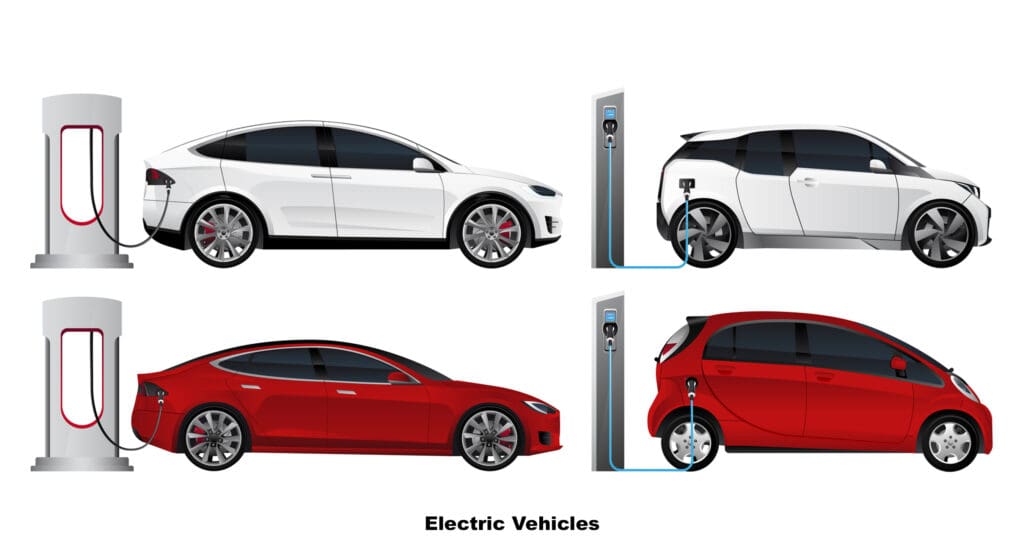
Most of us love the driving experience of e-cars. And a lot of electricity is produced in Costa Rica from renewable resources. (Except the bunker crude-fired plant in Barranca near Puntarenas). We are a net exporter of hydro due to the good fortune of high mountains, lots of rain, sun, and numerous geothermal systems in northern Costa Rica fired by below-ground volcanic activity.
So, you’d think e-cars are a no-brainer here in Costa Rica.
Environmentalists (not all), governments, global manufacturers, and politicians are all nudging us to go electric. Costa Rica dealerships are aggressively promoting them. The costs on most of the EVs have come down substantially. So why hesitate?
Aside from any acrimonious arguments against claims of environmental contributions (there are plenty), I’ll only focus on more tangible issues at hand. As of the time of this writing, Costa Rica dealers lack fully trained technicians and costly, essential EV service tools. Also, as mentioned above, even though Costa Rica produces more renewable hydro resources than what we consume, the infrastructure for EVs is not nearly what you’d be comfortable with in rural areas. Be prepared for multiple-hour pit stops for re-charging. (waiting in line behind others at a lone charging station). That will change in time, but for now, research the charging stations in your locale to determine the viability of ownership.
It may not be the time for you as an ex-pat to make such a purchase. Nevertheless, if you are determined to own one, be sure the brand you purchase is properly backed by a bonified dealer/distributor/importer and stick only with the leading brands with warranty, parts, and accessible service.
Therefore, before you purchase any EV, be absolutely sure to check with the highly credible Costa Rica Vehicle Importers Association. https://www.aivemacr.com/
If in doubt, back away.
Where to begin shopping for new and used vehicles.
Head first to San Jose, where most leading brand dealerships are located all along a single strip in (La)Uruca. Well worth the trip in for a day or two of thorough shopping. Dealerships/Brands are listed in the map below in order of location (not quality) from left to right, top to bottom.
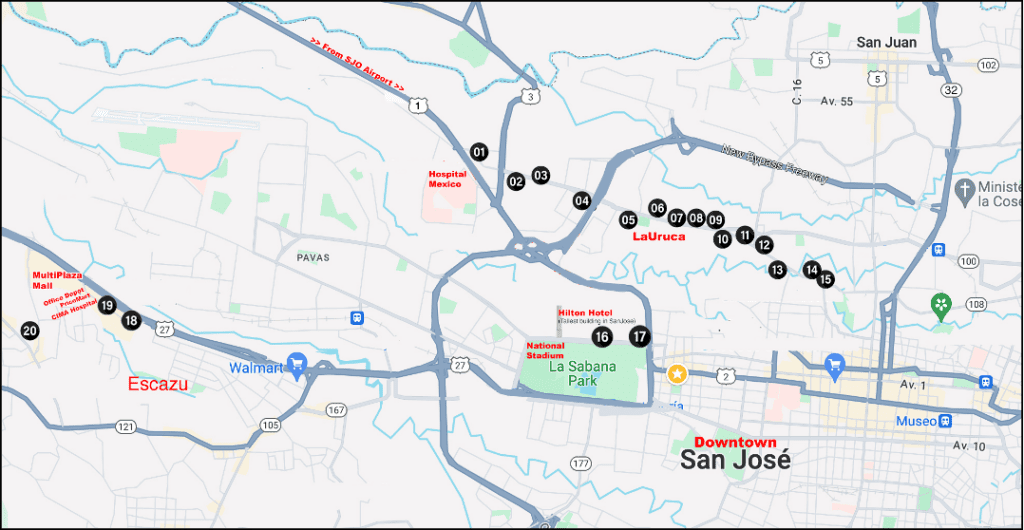
Dealers
(Click on the images below for enlarged views of the dealerships)
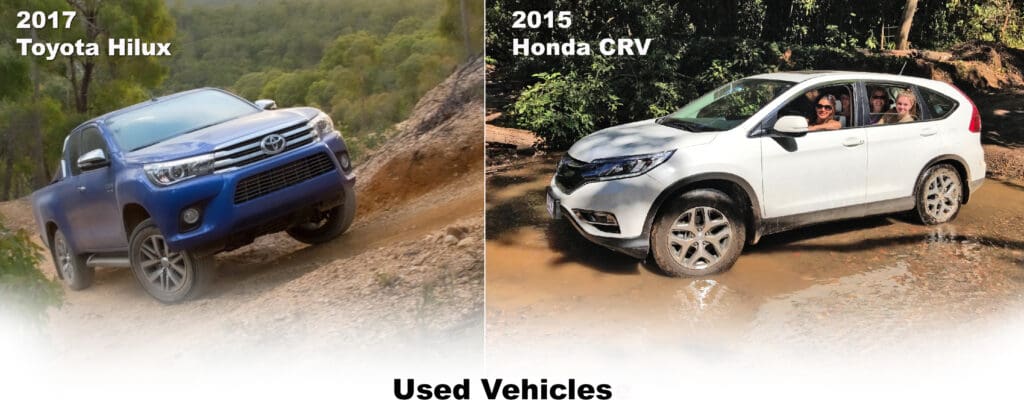
I shake nervously, thinking about purchasing a used vehicle in Costa Rica. Over the years, I have received too many emails from clients who were duped into bad vehicles. At the same time, far more clients have successfully obtained a reliable used vehicle at a fair price. Due diligence is critical.
The Hunt
My first choice would be to visit all the new vehicle dealers and see what they have in their used inventory. Why? When they take a trade-in and deem it to be in decent shape after a thorough multiple-point inspection, they service and certify it and put it in their used inventory. If not confident in that trade-in, they call any number of local car jockeys and wholesale it out the back door. So, it would be a good idea to begin your search for a reliable used vehicle at any of the 21 new car dealers listed above. (They’ve got other locations throughout Costa Rica, so look them up on Google to find the ones nearest to where you live).
There is also a local version of Car Hunters. https://www.carhunterscr.com/
They are not affiliated with anything outside of Costa Rica and are privately owned and operated. They have their own certified used vehicle inventory to choose from. Or if you have something particular in mind, give them the specs, and they hunt for it. If it exists in Costa Rica, they’ll find it through an extensive list of contacts with other car dealers. (new and used) who they have vetted as reliable.
I have only vetted Car Hunters superficially with a lengthy phone interview, but I was very impressed with what I heard. Based on that, you should contact them and give them a chance.
Google lists other car locator services that I still need to vet personally. Some are a tad sketchy in how they operate. Be wary.
(NOTE: Feel free to send me any POSITIVE experiences that I can post here later).
How to purchase a vehicle in Costa Rica
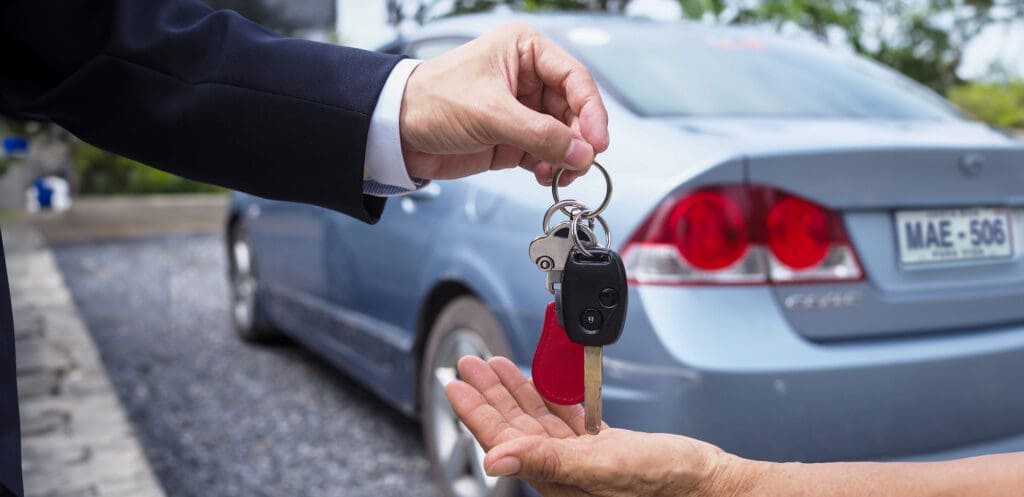
For a complete guide on how to purchase a car in Costa Rica, you will be well served to read this comprehensive article by my friend and affiliate Allan Garro:
www.garrolaw.com/everything-you-need-to-know-about-buying-a-car-in-costa-rica/
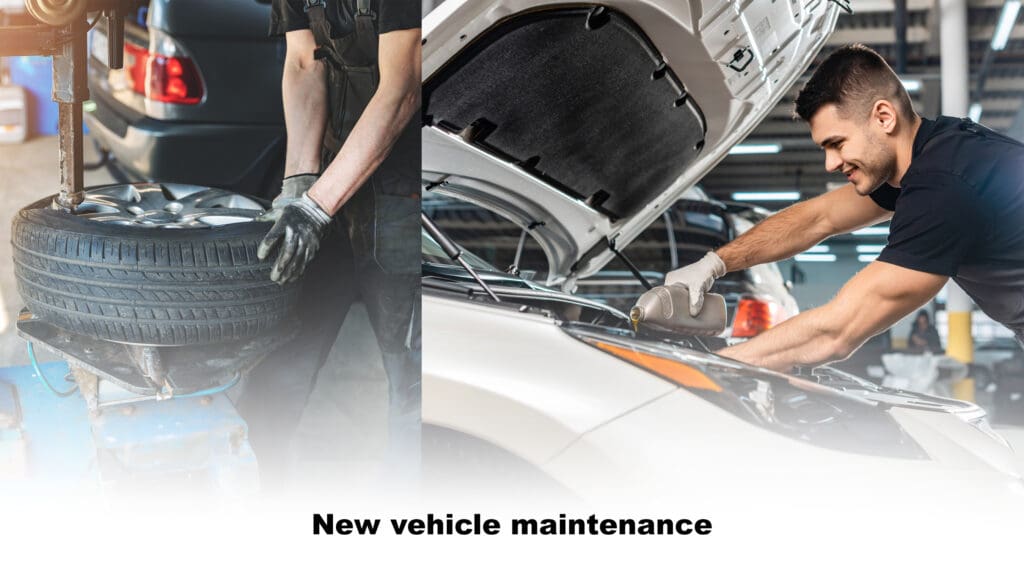
Regular maintenance of all new cars is often done by many local service centers and quality local garages using original brand filters, top quality oils, wiper blades, brake pads, and rotors. Top-rated tires locally produced by Bridgestone are available from PriceMart – all at about 50% of the cost of getting the same from the original dealers. Be comprehensive in vetting whomever you choose to do that service nearest your residence. If in doubt, ask around or stick with the original dealer.
Also, once your vehicle is beyond the warranty period, be careful about the source of replacement parts. Use only original brand parts (OEM) or replicas from the U.S.A. or Korea and never from China, as those lack fit and durability.
Costa Rica gasoline is not the “cleanest.” Therefore, do the regularly scheduled oil changes to prevent premature engine wear from pollutants in the gas sold here. Tend to this religiously, and your vehicle will last much longer. Same logic for used vehicles.

Not exactly my cup of tea, but with several family men really into it, I am “invited” to attend some rather nice classic car shows each year. There is a vibrant classic car culture here in Costa Rica, with very skilled service and restoration shops. You’d be surprised. There are at least three significant annual classic car shows in the Central Valley with impressive vehicles, many of which were fully restored here in Costa Rica. They can be imported with low import tax but with special provisions. Again, it is crucial that you retain the services of a well-vetted customs broker to import such a vehicle properly and economically. If you have questions about this, please let me know.
“Lincoln” Laura
